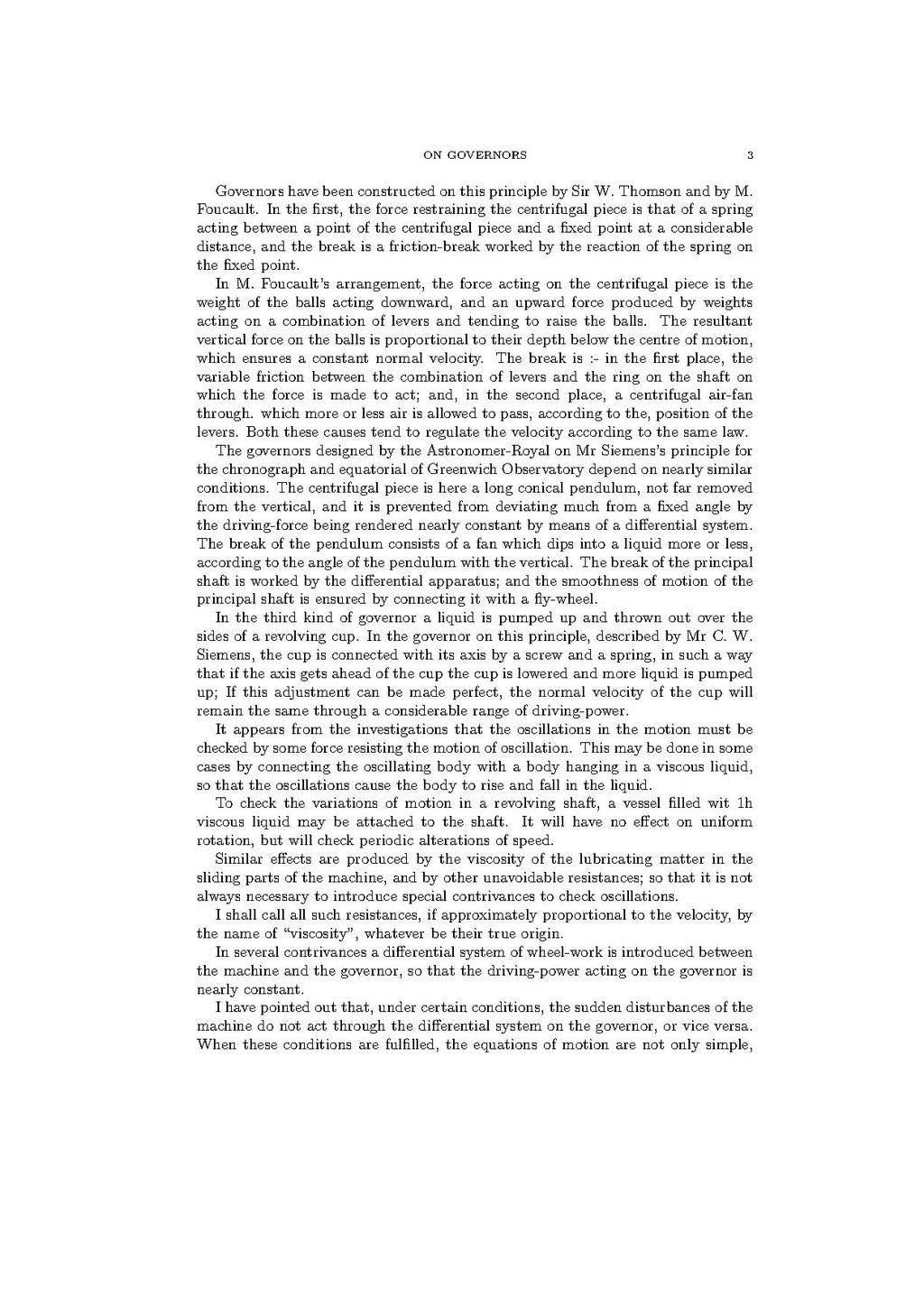Governors have been constructed on this principle by Sir W. Thomson and by M. Foucault. In the first, the force restraining the centrifugal piece is that of a spring acting between a point of the centrifugal piece and a fixed point at a considerable distance, and the break is a friction-break worked by the reaction of the spring on the fixed point.
In M. Foucault’s arrangement, the force acting on the centrifugal piece is the weight of the balls acting downward, and an upward force produced by weights acting on a combination of levers and tending to raise the balls. The resultant vertical force on the balls is proportional to their depth below the centre of motion, which ensures a constant normal velocity. The break is:- in the first place, the variable friction between the combination of levers and the ring on the shaft on which the force is made to act; and, in the second place, a centrifugal air-fan through, which more or less air is allowed to pass, according to the, position of the levers. Both these causes tend to regulate the velocity according to the same law.
The governors designed by the Astronomer-Royal on Mr Siemens’s principle for the chronograph and equatorial of Greenwich Observatory depend on nearly similar conditions. The centrifugal piece is here a long conical pendulum, not far removed from the vertical, and it is prevented from deviating much from a fixed angle by the driving-force being rendered nearly constant by means of a differential system. The break of the pendulum consists of a fan which dips into a liquid more or less, according to the angle of the pendulum with the vertical. The break of the principal shaft is worked by the differential apparatus; and the smoothness of motion of the principal shaft is ensured by connecting it with a fly-wheel.
In the third kind of governor a liquid is pumped up and thrown out over the sides of a revolving cup. In the governor on this principle, described by Mr C. W. Siemens, the cup is connected with its axis by a screw and a spring, in such a way that if the axis gets ahead of the cup the cup is lowered and more liquid is pumped up; If this adjustment can be made perfect, the normal velocity of the cup will remain the same through a considerable range of driving-power.
It appears from the investigations that the oscillations in the motion must be checked by some force resisting the motion of oscillation. This may be done in some cases by connecting the oscillating body with a body hanging in a viscous liquid, so that the oscillations cause the body to rise and fall in the liquid.
To check the variations of motion in a revolving shaft, a vessel filled wit 1h viscous liquid may be attached to the shaft. It will have no effect on uniform rotation, but will check periodic alterations of speed.
Similar effects are produced by the viscosity of the lubricating matter in the sliding parts of the machine, and by other unavoidable resistances; so that it is not always necessary to introduce special contrivances to check oscillations.
I shall call all such resistances, if approximately proportional to the velocity, by the name of “viscosity”, whatever be their true origin.
In several contrivances a differential system of wheel-work is introduced between the machine and the governor, so that the driving-power acting on the governor is nearly constant.
I have pointed out that, under certain conditions, the sudden disturbances of the machine do not act through the differential system on the governor, or vice versa. When these conditions are fulfilled, the equations of motion are not only simple,
